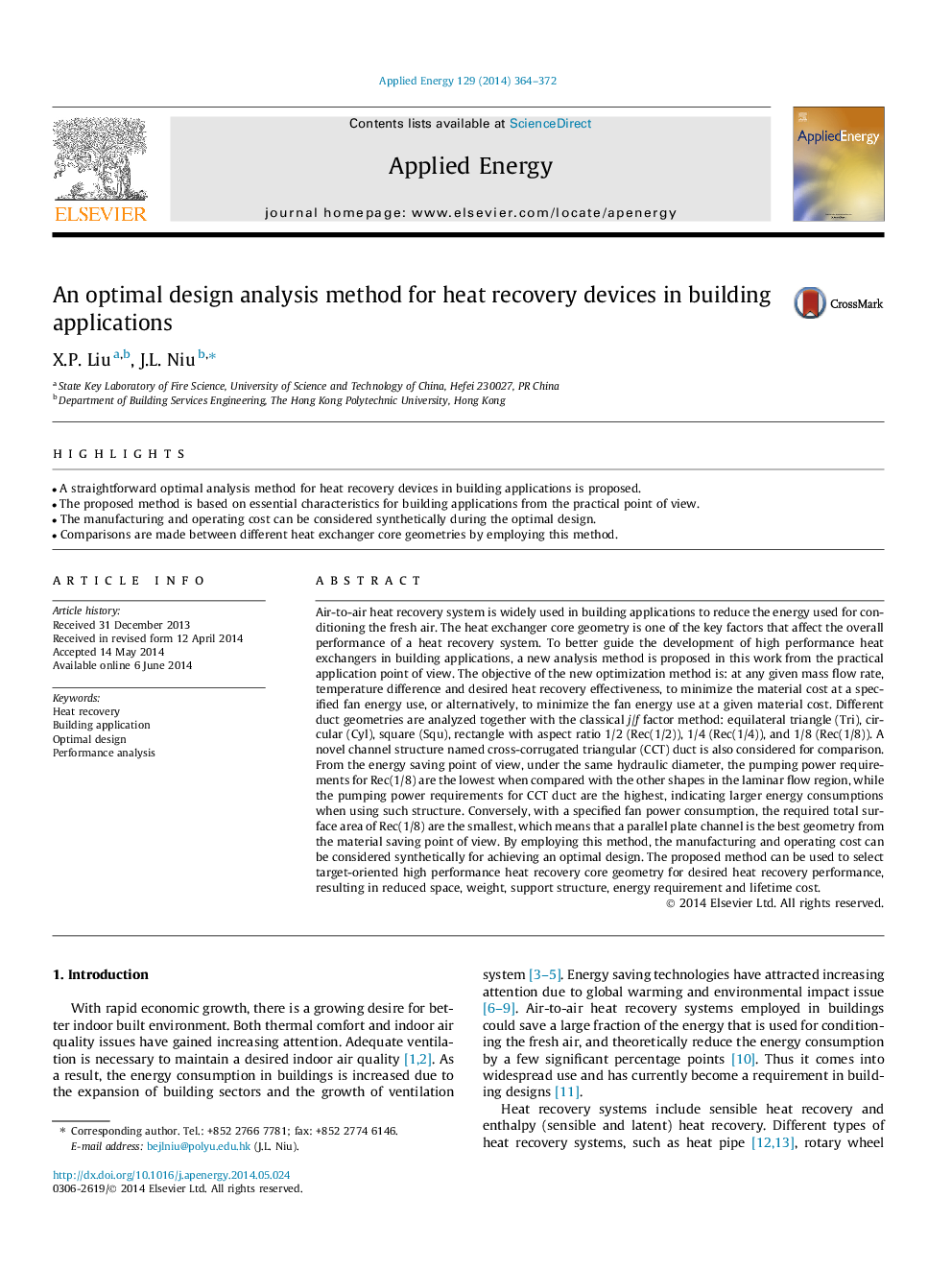| کد مقاله | کد نشریه | سال انتشار | مقاله انگلیسی | نسخه تمام متن |
|---|---|---|---|---|
| 242728 | 501897 | 2014 | 9 صفحه PDF | دانلود رایگان |
• A straightforward optimal analysis method for heat recovery devices in building applications is proposed.
• The proposed method is based on essential characteristics for building applications from the practical point of view.
• The manufacturing and operating cost can be considered synthetically during the optimal design.
• Comparisons are made between different heat exchanger core geometries by employing this method.
Air-to-air heat recovery system is widely used in building applications to reduce the energy used for conditioning the fresh air. The heat exchanger core geometry is one of the key factors that affect the overall performance of a heat recovery system. To better guide the development of high performance heat exchangers in building applications, a new analysis method is proposed in this work from the practical application point of view. The objective of the new optimization method is: at any given mass flow rate, temperature difference and desired heat recovery effectiveness, to minimize the material cost at a specified fan energy use, or alternatively, to minimize the fan energy use at a given material cost. Different duct geometries are analyzed together with the classical j/f factor method: equilateral triangle (Tri), circular (Cyl), square (Squ), rectangle with aspect ratio 1/2 (Rec(1/2)), 1/4 (Rec(1/4)), and 1/8 (Rec(1/8)). A novel channel structure named cross-corrugated triangular (CCT) duct is also considered for comparison. From the energy saving point of view, under the same hydraulic diameter, the pumping power requirements for Rec(1/8) are the lowest when compared with the other shapes in the laminar flow region, while the pumping power requirements for CCT duct are the highest, indicating larger energy consumptions when using such structure. Conversely, with a specified fan power consumption, the required total surface area of Rec(1/8) are the smallest, which means that a parallel plate channel is the best geometry from the material saving point of view. By employing this method, the manufacturing and operating cost can be considered synthetically for achieving an optimal design. The proposed method can be used to select target-oriented high performance heat recovery core geometry for desired heat recovery performance, resulting in reduced space, weight, support structure, energy requirement and lifetime cost.
Journal: Applied Energy - Volume 129, 15 September 2014, Pages 364–372
